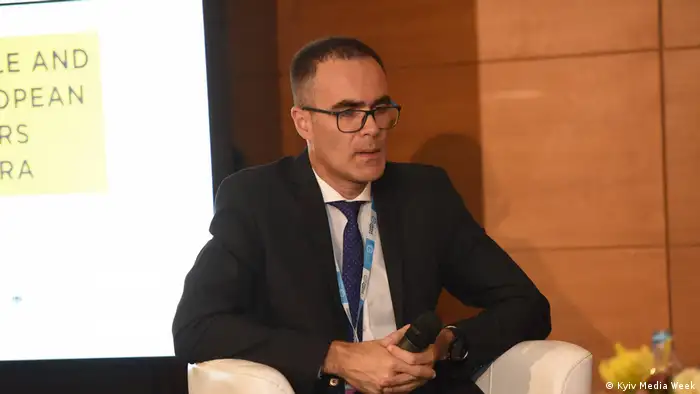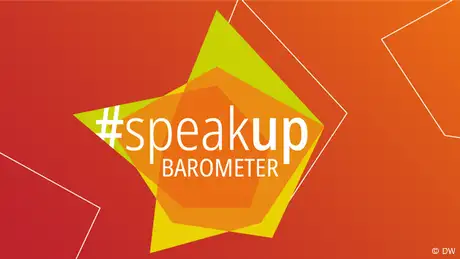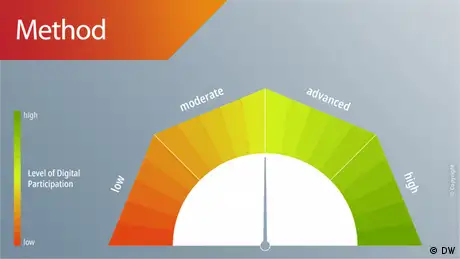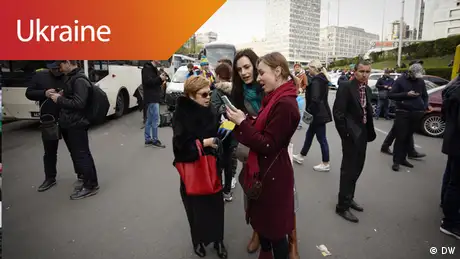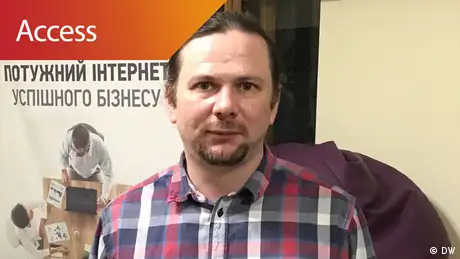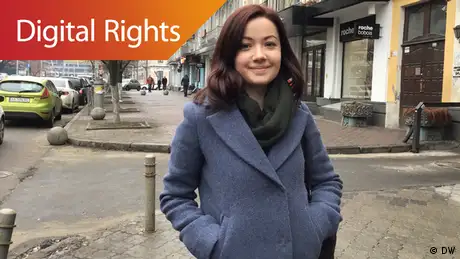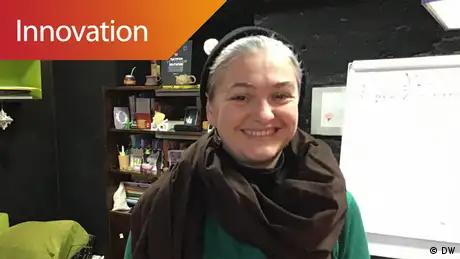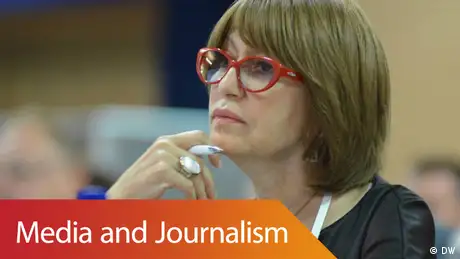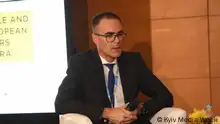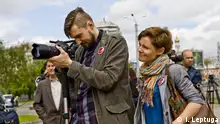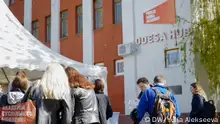#speakup barometer | Ukraine
Digitalization is advanced in Ukraine, but the ongoing conflict with Russia has had a negative impact on digital participation.
In Ukraine, digital media and social networks have become ubiquitous, but informational warfare with Russia harms digital participation.
Kyryl Savin is DW Akademie’s country manager for Ukraine, where he works closely with partner organizations to support sustainable journalism and digital participation. In an interview with the #speakup barometer team, he shares his insights on digital participation in Ukraine.
#speakup barometer: How do you assess the current level of digital participation in Ukraine?
Ukraine has quite a high degree of digitalization. There are different factors that have contributed to this: On the one hand, since Ukraine gained independence in 1991, newspapers have barely played a role in the Ukrainian media landscape. People get their daily news elsewhere. Before digitalization, this was mainly television, but now, increasingly, they’re turning to digital media. Secondly, the price for Internet access in Ukraine is so low that even the rural population can afford reasonable data packages.
On the other hand, the conflict with Russia and the concurrent informational war have had quite a negative impact. It has become more difficult for users to differentiate between information and propaganda. From the Ukrainian side, former President Poroshenko’s decision to block certain Russian websites has put limits on digital participation, even if – from a technical standpoint – it is relatively easy to circumvent the blocking and many Ukrainians do that.
Since the Maidan revolution, how have the informational attacks from Russia changed digital participation?
The propaganda war with Russia has led people to distrust everything. Ukrainian citizens differentiate much more between themselves and “others.” They build a small circle of “us” – friends, the media, but also politicians they trust; all “others” are suspect and classified as fake news. People are afraid of becoming the victim of propaganda since not everybody is able to fact check information. The informational war has lead to a sharp rise in disinformation and manipulation, which has also shattered trust in journalists.
Have Ukrainians changed their communication on social networks as a result?
Especially on Facebook, emotions are boiling up. It is very common for factual debates to turn into hate speech. As a result, space for meaningful public debate has diminished since 2014. In addition, you cannot be sure anymore with whom you are debating on Facebook: It could be a normal human being or a bot that won't listen anyway. Discussions often escalate. People block each other and thus are more and more isolated in their own informational bubbles, meaning among people who are already saying what you want to hear.
What impact has digitalization had on the country's media landscape?
Since print media has traditionally been very weak in Ukraine, television was the most important media source in the 1990s and 2000s. Digitalization and the rise of 4G mobile Internet changed the landscape: TV remains important, especially for the elderly and rural populations, but many Ukrainians are now using digital media as their primary source of information, and social media as a channel for political communication. This tilts the balance within the media market.
Another interesting development is the fact that radio is becoming more popular, as many new Internet radio stations – some music radio, some talk radio – and a growing number of podcasts have begun to pop up.
What are the main challenges?
TV stations face the challenge of how to combine linear programming with an online presence. This is especially difficult for regional media houses, where managers are still thinking in the framework of classic television. Print media outlets are much further advanced, having gone digital much earlier. Media viability remains a challenge for everyone, but in particular for online media. It is difficult to find sustainable financing models without becoming dependent on the oligarchs. There are some promising examples, but the challenge remains very real for many media houses.
What is the main focus of DW Akademie in Ukraine?
We see all these challenges and hear about them when talking to our partners. Currently, we are working in two fields to help improve the situation. On the one hand, we help train journalists and media managers. Media managers often start as journalists and therefore lack the management skills necessary to steer their media houses through the transformations that digitalization requires. We also support a school for economic journalism, as we discovered – together with our partners – that there is very little good reporting on economic and consumer issues. On the other hand, we support projects in media and information literacy (MIL). In one project, we help train multipliers that sensitize citizens to Russian propaganda, help them with basic fact checking, and develop a code of conduct for social media. In another, we work with citizen reporters and small media outlets that can bring different voices to the debate than the big media conglomerates owned by oligarchs do.
The #speakup barometer is a DW Akademie project that examines the connection between digital participation, freedom of expression and access to information. Learn more at www.dw.com/barometer
- Date 01.07.2019
- Author Erik Albrecht
- Feedback: Send us your feedback.
- Print Print this page
- Permalink https://p.dw.com/p/3LO4X
- Date 01.07.2019
- Author Erik Albrecht
- Send us your feedback.
- Print Print this page
- Permalink https://p.dw.com/p/3LO4X

